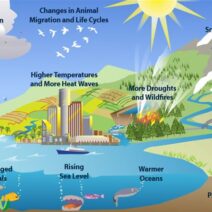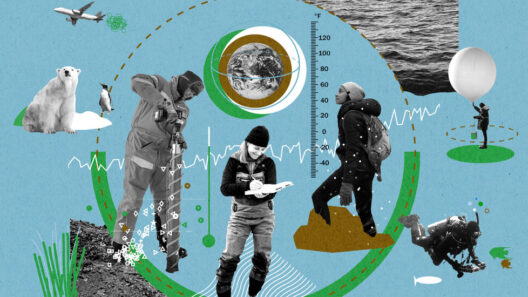Climate change is an existential challenge, an urgent dilemma that demands assiduous engagement with diverse methodologies and technologies to mitigate its ravaging impacts. As humankind grapples with global warming, the introduction of innovative technologies has the potential to pave pathways toward a sustainable future. Understanding how technology can drastically reduce global warming not only promises a shift in perspective but also piques our curiosity, urging us to rethink our role in nurturing the planet.
At the heart of technological innovations combating climate change is the quest for renewable energy. With fossil fuel dependency being a principal driver of greenhouse gas emissions, shifting to renewable sources is paramount. Solar, wind, and hydroelectric energy have surged in usage owing to advancements in efficiency and accessibility. For instance, solar panels have become more affordable and efficient, allowing households and businesses to harness energy directly from the sun, significantly reducing carbon footprints. Wind energy, too, has benefited from technological improvements resulting in more robust turbines capable of capturing energy even at low wind speeds.
Moreover, the intersection of artificial intelligence (AI) and energy management manifests yet another promising avenue toward sustainability. AI systems can optimize energy consumption in real-time. These intelligent systems can analyze energy usage patterns, predict demand, and adjust settings in homes and businesses accordingly. Smart grids—bolstered by AI—are revolutionizing energy distribution by enabling efficient energy flow management, integrating renewable sources, and reducing waste. With AI, we are witnessing a transition from reactive to proactive energy management.
In addition to energy innovations, technology plays an instrumental role in enhancing carbon capture and storage (CCS) techniques. Carbon capture technology offers a feasible solution to retrieve carbon dioxide emissions before they reach the atmosphere. Facilities equipped with CCS can trap carbon dioxide emissions and store them underground or repurpose them for commercial use. This technology holds significant potential, aiding industries in decarbonizing their operations while enabling a more circular economy.
The agriculture sector also navigates transformation through technology. Innovative practices, such as precision agriculture, are leveraging data analytics, satellite imaging, and IoT (Internet of Things) devices to enhance crop yields while minimizing resource utilization. By optimizing water usage and reducing excess fertilizer application, farmers can significantly lower their carbon emissions. Furthermore, vertical farming, a novel approach to urban agriculture, promotes sustainable food production while minimizing transportation emissions associated with traditional farming practices. These technologically driven agricultural methods offer solutions to meet food demands without exacerbating climate change.
Electric vehicles (EVs) represent another cornerstone of technology’s role in reducing global warming. As transportation is a leading contributor to greenhouse gas emissions, the adoption of EVs is paramount. With technological advancements in battery capacity and charging infrastructure, electric vehicles are becoming increasingly viable. The proliferation of charging stations and improvements in battery efficiency enhance convenience and range, making EVs a compelling alternative to gasoline-powered vehicles. Furthermore, the integration of renewable energy sources to power these vehicles amplifies their potential to curb emissions.
Sustainable urban planning is another area where technology can significantly contribute to mitigating climate change. Smart cities leverage data and connected technologies to improve urban infrastructure. Intelligent traffic management systems can minimize congestion, thereby reducing emissions from idling vehicles. Sensor-driven waste management systems can optimize collection routes, thus cutting down energy consumption. Moreover, the transformation of public transportation through smart solutions encourages the use of public transit over personal vehicles, further reducing urban carbon footprints.
The greening of technology itself requires attention. E-waste—the rapidly growing sector of waste generated from discarded electronics—poses a significant environmental challenge. However, innovative recycling technologies can recover valuable materials from e-waste, reducing the need for virgin resources. Circular economy models that extend product life cycles and encourage refurbishment and recycling play an essential role in diminishing the environmental impacts associated with technology production.
As technology continues to evolve, so does our understanding of its potential applications in the fight against global warming. Blockchain, for instance, emerges as a transformative force in promoting transparency in supply chains. By providing immutable records of sustainability practices, blockchain technology helps consumers make informed choices and encourages companies to adopt greener practices. Additionally, it plays a significant role in the power sector through peer-to-peer energy trading, allowing individuals to buy and sell excess renewable energy directly without intermediaries.
Yet, while technology holds immense promise, it is imperative to acknowledge the necessity of systemic changes alongside these innovations. Policymakers must embrace collaborative approaches that integrate technology within broader environmental strategies. Investment in research, development, and education on sustainability and technology adoption will be essential. Awareness campaigns can facilitate a collective cultural shift towards sustainable practices and foster a society that values environmental stewardship.
In conclusion, technology stands at the forefront of our struggle against global warming, offering solutions that span various sectors. From renewable energy advancements to intelligent transportation solutions and sustainable agricultural practices, innovations are unlocking the potential for a greener future. However, for technology to have its intended impact, it must be complemented by strategic policy interventions, public engagement, and a commitment to fostering a culture of sustainability. As we embrace these technologies, it is paramount to remain vigilant stewards of the planet, one innovation at a time.








